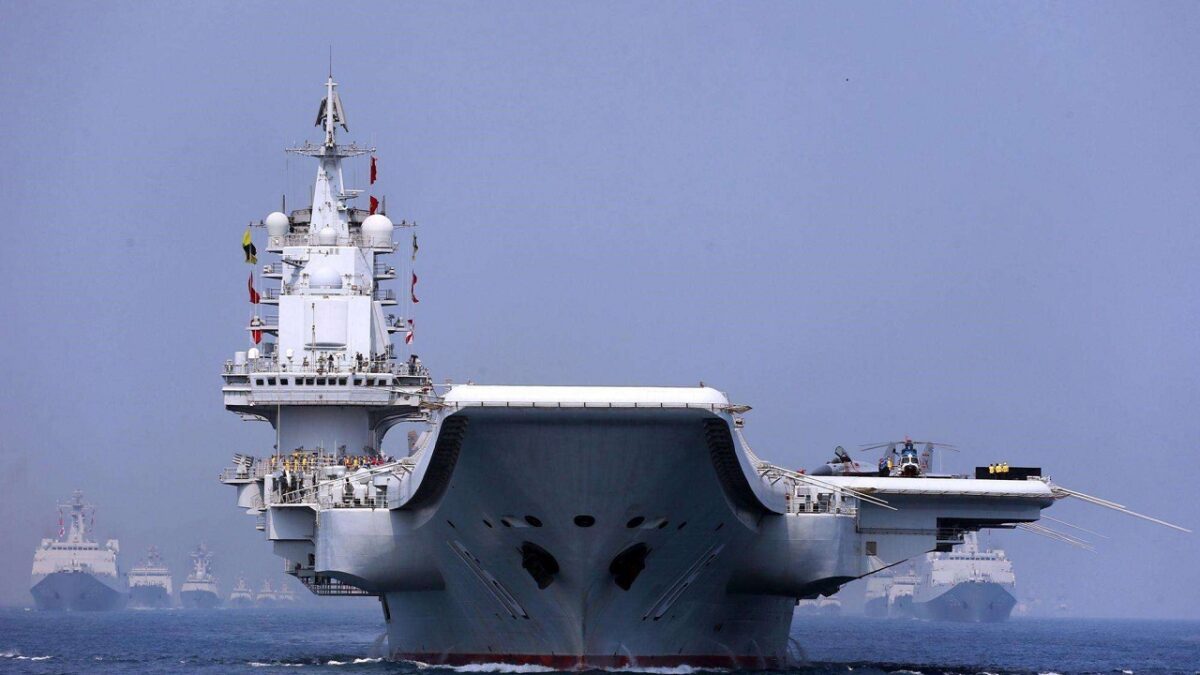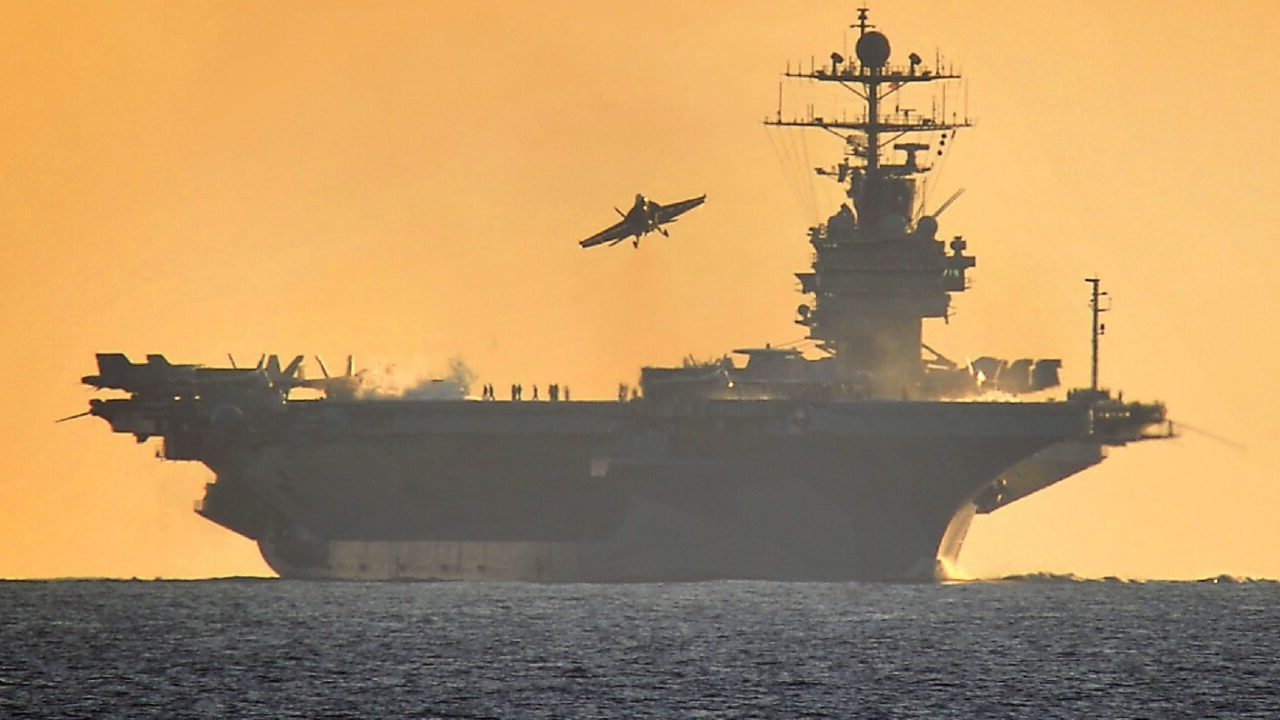Earlier this month, the People’s Liberation Army Navy (PLAN) launched its third aircraft carrier. The Type 003 flattop left its drydock at a shipyard outside Shanghai on June 17. Named Fujian after the Chinese province that sits directly across from Taiwan, it is China’s largest and most powerful warship built to date. While it won’t enter service for a few more years, when it eventually does, Fujian will be equipped with the latest weaponry and aircraft-launched technology.
The warship is part of Chinese President Xi Jinping’s efforts to make the PLAN a world-class navy that can project power around the world. However, speculation is already turning to the next carrier, the Type 004.
Unclear if it’s Nuclear
Few details have actually been released about Beijing’s next carrier, but rumors have swelled in recent years that the Type 004 would be nuclear-powered – which would truly be a “great leap forward” for China and the PLAN. However, those rumors may have been greatly exaggerated.
According to a post on Friday from the South China Morning Post, the fourth PLAN carrier might actually be diesel-powered, much like the Type 003 and China’s preceding flattops now in service. The conventional choice is more likely as China’s naval nuclear reactor technology is apparently not advanced enough to support an aircraft carrier.
That shouldn’t be seen as a setback, however.
Reports of a nuclear-powered carrier began in early 2018 when China State Shipbuilding Corporation (CSSC) said that it has started development on the next carrier, which could “realize its strategic transformation and combat-readiness capability in deep waters and open oceans by 2025.” Details at the time also suggested that the Type 004 would displace between 90,000 and 100,000 tons and have EMALS catapults for the launching of aircraft.
As recently as March of this year, it was still being reported that the Type 004 would be nuclear-powered. According to past reporting from South China Morning Post, which quoted a source close to the Chinese navy, who said that the vessel would be “a technological leap for the shipbuilding industry … but construction may take longer than for its sister ship due to the different propulsion systems.”
That fueled speculation that Beijing was focused on a “nuclear option,” especially as a second source also told the news outlet that the Central Military Commission was studying a proposal from CSSC to employ nuclear power for the fourth carrier. Furthermore, it was in 2019 that the China General Nuclear Power Group had solicited bids for a contract to build a 30,000-tonne nuclear-powered ship, which was described as an “experimental platform.”
Another Carrier – But Not Nuclear
Based on the reports, it is likely that the Type 004 could be already under construction and that it would be similar to the Fujian.
“The final decision about whether the Type 004 will be a nuclear-powered or diesel-propelled ship has yet to be made, but the navy leadership is in favour of conventional power,” another source close to the PLAN told South China Morning Post this week on condition of anonymity due to the sensitivity of the matter.
However, even if it isn’t nuclear-powered, the Type 004 could greatly enhance the PLAN’s capabilities, as it could be launched between 2025 and 2027.
“Construction work on the new ship will be handed over to the Jiangnan shipyard [in Shanghai],” the Chinese naval source added. “Special steel for the ship is ready, but construction work will not start until results of the Fujian‘s sea trials come out.”
That would further suggest that the Type 004 could closely follow the designs of the Type 003, while it is also likely that studies from the nuclear experimental platform would continue for future vessels.
More importantly, based on the Chinese timetable, it would meet China’s goal of having four aircraft carrier strike groups (CSGs) by 2030. An additional conventional powered carrier could be more readily completed by that time, and yet still prove crucial to China’s future goals in the Indo-Pacific region.
“Unlike the US Navy’s global strategy, the Chinese navy just navigates in the waters of the Indian Ocean and the western Pacific region,” Beijing-based naval expert Li Jie also told the Chinese media outlet. “Diesel-powered aircraft carriers are powerful enough for the PLA Navy to perform tasks such as safeguarding China’s territorial sovereignty, escorting Chinese commercial vessels shipping resources from the Middle East, and so on.”
However, only the Type 001 Liaoning – a refurbished Soviet-era warship that was sold by Ukraine to China and only completed in 2012 – has actually achieved initial operational capability or basic combat readiness.
Future Nuclear Capabilities – It’s Coming
Even if the Type 004 isn’t nuclear powered, there is very good reason to believe that Beijing will continue to seek to develop the technology. The PLAN currently has more than a dozen nuclear-powered submarines, including its Type 091, Type 093 and Type 095 boats.

A Chinese Aircraft Carrier on the high-seas. Image Credit: Chinese Internet.
Thus, the Type 004 may still be conventionally-powered, but the PLAN continues to play the long game. That means that the nuclear ambitions may just be directed towards the Type 005 or future flattop. Sooner or later, China will launch its nuclear-powered carrier.
It is simply a matter of when not if.
Now a Senior Editor for 1945, Peter Suciu is a Michigan-based writer who has contributed to more than four dozen magazines, newspapers and websites. He regularly writes about military hardware, firearms history, cybersecurity and international affairs. Peter is also a Contributing Writer for Forbes.

